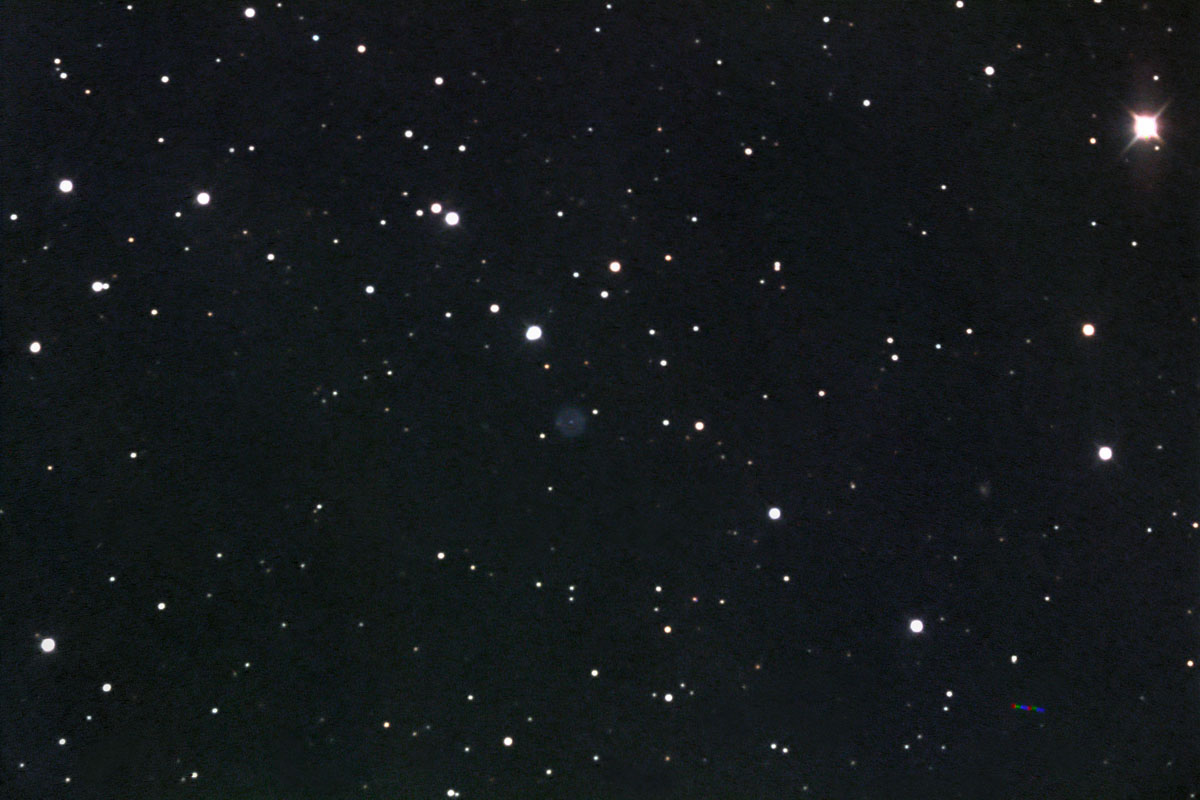|
You are certainly viewing one of the first color images of this unusual object around. Baade 1, or PK 171-25.1 is just south of the Pleiades, and has taunted the most dedicated deep sky observers for decades. So obvious was it first plotted on the Becvars Atlas of the Heavens as a satisfyingly huge green ball. However, it is one of the most difficult deep sky objects in the Atlas to see visually! Baade 1 is 14th magnitude spread out over a size of 48 arcseconds. It is an unusual pale blue in color, in contrast to most planetaries which photograph as red or green. The central star, is 17.2 magnitude, and is bluish in this image as well. The nebula is slightly ruddy in the core, and has a very faint star on one edge. Ogyalla, a 15.8 magnitude asteroid left a colorful trail in the image to the lower right. Since this was a RGBBRGBB image, the colored dots as it moved from left to right are those colors. An LRGB image would not have recorded the asteroid like this, since the RGB and L channels would be taken at different times. Numerous small anonymous galaxies dot the image. The most obvious is MAC 0352+1927 to the right, yellowish in color as are most distant galaxies from intergalactic extinction from dust, and some reddening from recession velocity red shifting. Processing: This is a RGBBRGBB image, with the sub frames added to create a synthetic luminance channel for more advanced processing. Instrument: 12.5" f/5 Home made Newtonian Platform: Astrophysics 1200 QMD CCD Camera: SBIG ST8i Exposure: LRGB = 80:20:20:40 (RGB Binned 2x2) RGB Combine Ratio: 1: .75: 1 Filters: RGB Tricolor Location: Payson, Arizona Elevation: 5150 ft. Sky: Seeing FMHW = 2.5 arcsec, Transparency 8/10 Outside Temperature: 10 C CCD Temperature: -10 C Processing: Maxim DL, Photoshop, AIP4WIN, PW Pro.
|
||
|
|
||
|
FastCounter by bCentral |
